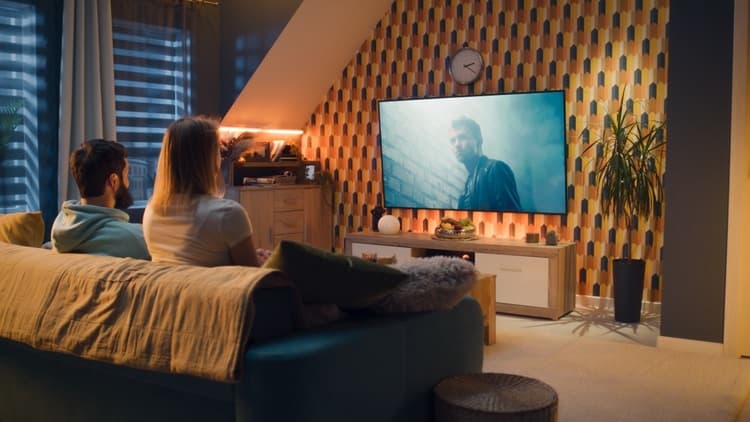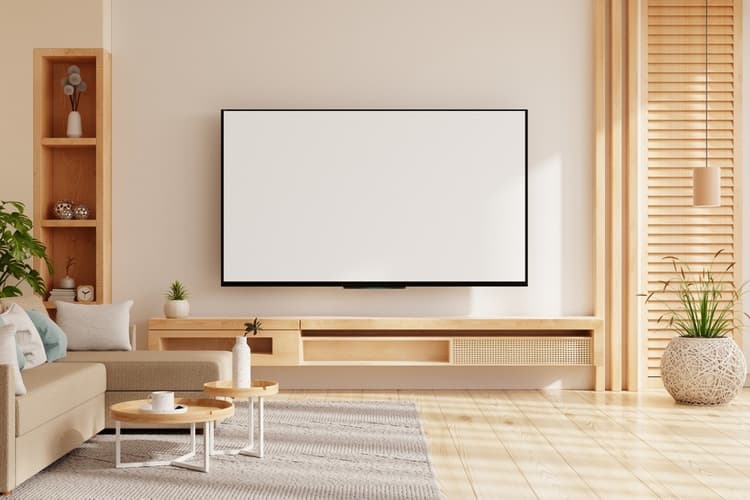The Ultimate Guide to Buying a New Smart TV
Ethan Taylor • November 2, 2024 • 7 min
Smart TVs have transformed the way we experience home entertainment, combining traditional viewing with online streaming, gaming, and smart home integration. This guide will walk you through everything you need to know about smart TVs, from features and types to factors to consider before buying.

Make your next purchase with confidence by understanding what matters most.
What to Look for When Buying a New Smart TV
Choosing the right smart TV requires careful consideration of various features to ensure it meets your entertainment needs. Before making a purchase, think about the quality of the display, the type of operating system it runs on, and whether it supports the apps and connectivity options you need. Additionally, factors like size, resolution, and cost play essential roles in how satisfied you'll be with your new TV.
A smart TV should provide ease of use and seamless connectivity with your favorite streaming platforms, audio devices, and smart home gadgets. Think about what matters to you most: is it picture quality, sound, app availability, or something else? Identifying your primary needs can help narrow down your choices and ensure that your purchase is the right fit for you.
What’s a Smart TV?
A smart TV is an internet-connected television that offers more than just traditional cable channels. It includes built-in streaming apps, such as Netflix, YouTube, and Hulu, allowing you to access a wide range of content directly. In addition to streaming, smart TVs can connect to various smart home devices, such as voice-activated assistants and security cameras, making them more versatile than standard televisions.
Most smart TVs are designed to support multiple features, including screen mirroring, gaming capabilities, and integration with home automation systems. Their operating systems are typically designed to support popular streaming platforms and allow for future software updates. With a smart TV, you get a device that combines TV functionality with the flexibility of a multimedia device, making it a popular choice for modern homes.
8 Factors to Consider Before Buying a Smart TV
With a variety of smart TVs available, it can be overwhelming to pick the right one. Here are eight crucial factors to help you make an informed decision:
- Cost: Smart TVs vary significantly in price, so it’s essential to set a budget that aligns with the features you need.
- Size: The screen size affects viewing experience, so choose one that fits well in your space.
- Screen Types: Decide between LCD, LED, OLED, or QLED screens, each offering different levels of brightness and contrast.
- Resolution: Higher resolutions provide clearer images; consider options from Full HD to 8K.
- Refresh Rate: A higher refresh rate reduces motion blur, which is essential for sports and gaming.
- Connection Ports: Look for HDMI, USB, and Ethernet ports to connect all your devices.
- Apps: Make sure it supports the streaming apps and services you plan to use.
- Brand Reliability: Opt for a reputable brand with good customer support and warranty coverage.
When evaluating these factors, consider your viewing habits and how much each feature matters to you. Prioritizing your needs will help narrow down your options.
Cost
Smart TVs come in a wide price range, from budget-friendly models to high-end luxury options. Your budget will largely dictate the features available to you. Budget models may have fewer advanced features, while premium models offer high-resolution displays, better refresh rates, and additional smart home compatibility. When planning your purchase, compare prices across different brands and check for seasonal discounts.
Size
The size of the TV you choose depends on the room size and viewing distance. Generally, larger screens provide a more immersive experience, but they can be overwhelming in smaller spaces. Measure the distance from your seating area to determine an optimal size. A common rule of thumb is to sit at a distance that is 1.5 to 2.5 times the screen diagonal for an ideal viewing experience.
Screen Types
The screen type influences picture quality and viewing experience. Here’s a quick overview:
- LCD: These are affordable but may lack deep contrast.
- LED: A popular choice for brightness and energy efficiency.
- OLED: Offers superior color accuracy and deep blacks but is generally more expensive.
- QLED: Developed by some brands, QLED screens are bright and vibrant, suitable for well-lit rooms.
Each screen type has its own strengths, so pick one based on your viewing preferences and room lighting.
Screen Resolution
Resolution is key to image clarity. The most common resolutions are:
- Full HD (1080p): Basic, but clear enough for most purposes.
- 4K Ultra HD: A popular choice for its crisp detail and compatibility with most modern content.
- 8K: The highest resolution available, though content is currently limited.
For most households, 4K offers an excellent balance between quality and price, but if you want future-proofing, 8K may be worth considering.

Refresh Rates
A TV's refresh rate, measured in Hertz (Hz), determines how smoothly it displays motion. Standard refresh rates are 60Hz, which works well for most content. However, 120Hz and higher rates reduce motion blur, making them ideal for fast-paced movies, sports, and gaming. A higher refresh rate contributes to a smoother viewing experience, especially when watching dynamic content.
Connection Ports and Their Importance
Having the right connection ports is essential to connect various devices to your TV. Look for:
- HDMI: For soundbars, consoles, and streaming devices.
- USB: Allows you to plug in USB drives or keyboards.
- Ethernet: For a more stable internet connection.
The right ports help you integrate additional devices, enhancing your TV's functionality and compatibility with other electronics.
Apps
A good smart TV should support the major streaming apps and services you use regularly. Many TVs come pre-installed with popular apps like Netflix, Disney+, and Prime Video, but check to ensure your favorites are supported. Some TVs offer app stores for downloading additional apps, while others may restrict you to certain ones. The flexibility to add apps extends your entertainment options, making it easier to find the content you love.
Which Options Are The Best for Seniors
For seniors, ease of use and accessibility are essential in a smart TV. Some of the best options for seniors are models that feature simple remote controls, larger on-screen icons, and voice control for easy navigation. Many smart TVs now offer intuitive interfaces that allow seniors to switch channels, adjust volume, or even find programs by voice command. Look for options with adjustable font sizes and high-contrast displays to ensure text is easy to read.
Additionally, some smart TVs support closed captioning and can integrate with hearing aids or Bluetooth audio devices, enhancing accessibility for seniors with hearing challenges. These features can make the viewing experience comfortable and enjoyable for seniors who may be less familiar with complex devices.
How to Score Discounts on Your New Purchase
There are many ways to save money when buying a new smart TV. Start by researching seasonal sales, as many stores offer discounts around holidays. Online retailers may provide discounts, and signing up for promotional newsletters can keep you informed about special offers. You can also consider refurbished models, which often come at a lower price and with a warranty.
Another way to save is by comparing prices across retailers and using price-matching policies if available. Many stores match competitors’ prices, helping you get the best deal without additional searching. You may also consider waiting until a new model is announced, as prices often drop on older models when new ones are released.
Most Reliable Smart TV Brands: Our Favorites
Choosing a reliable brand can make a significant difference in the performance and longevity of your smart TV. Some of the most reliable brands are known for high-quality displays, user-friendly interfaces, and good customer support. Brands that frequently receive high ratings include Samsung, LG, and Sony. These companies have built reputations for quality, innovation, and durability.
Each brand offers unique advantages; for instance, Samsung’s QLED technology provides vibrant colors, while LG’s OLED models deliver excellent contrast. Sony TVs are well-regarded for their color accuracy and compatibility with gaming consoles. A reliable brand ensures peace of mind, often backed by a solid warranty and customer support network.
Conclusion
Choosing the right smart TV requires understanding your needs and evaluating various features, from screen type and size to resolution and connectivity options. Whether you’re shopping for yourself or a senior, considering factors like accessibility, cost, and brand reliability can help make an informed decision.
Disclaimer: This article provides general information to guide your smart TV purchase and is not intended as professional or financial advice. Always research thoroughly and consult store experts before finalizing your choice.